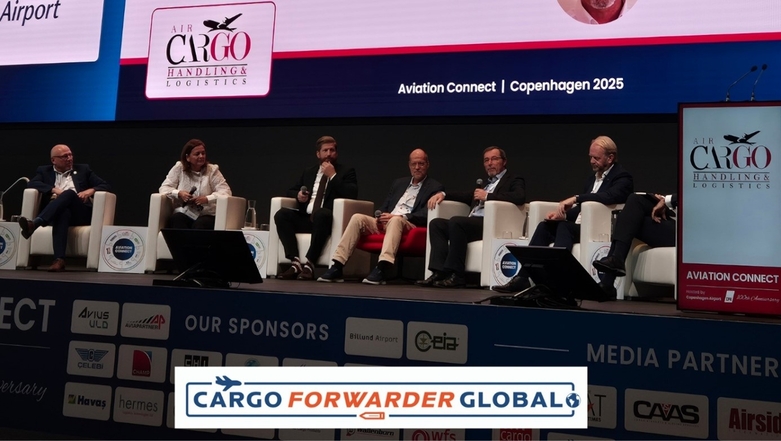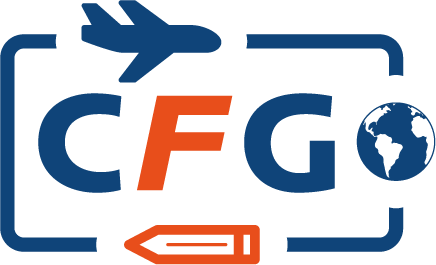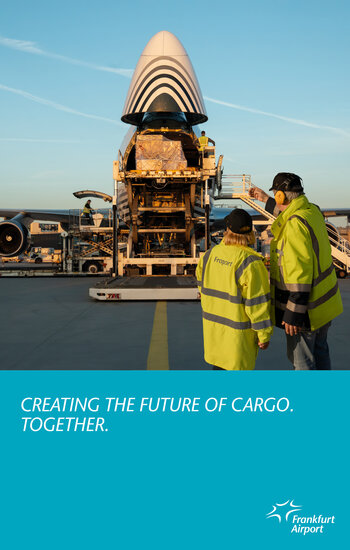At the ACHL in Copenhagen, Denmark, the panel on 15OCT25, titled “Standardization for a Safer, More Efficient Industry and Improved Service” picked up where last year’s quest for minimum handling standards left off (CFG reported at the time) Again moderated by ACHL’s own Chairperson, Henrik Ambak, the panel included IATA’s Global Head, Cargo, Brendan Sullivan, TIACA’s Director General, Glyn Hughes, KLM Cargo’s Director Operational Integrity, Compliance & Safety – ISCM, Kester Meijer, Cargo iQ’s Executive Director, Marie Seco-Köppen, ASA World’s Director of Safety & Standards, Steve Otterway, and FIATA’s Director General, Dr. Stéphane Graber.
Setting the tone, Henrik Ambak highlighted the absurdity of what he called ‘11 different ways to cone a 777 aircraft’ – an example that had come up in last year’s discussion already, but that was this time illustrated with a brief video showing the variations both in cone numbers and cone placements according to different airlines – all for one and the same aircraft type. Despite ICAO technical instructions forming the basis for IATA regulations such as Dangerous Goods (DG), many airlines add operator variations that leave front-line personnel juggling multiple rulebooks. “The poor guy on the ramp has to remember individual airline differences,”he noted.
The call for true industry-wide standardization echoed strongly across the panel stage over the next hour, as it tackled the complexity – and necessity – of harmonizing air cargo procedures.

Progress in practise…
Common standards can and do work, Ambak said, citing ICAO, IATA’s ONE Record initiative as examples, as well as stating that Cargo iQ was one such perfect demonstration. He invited Cargo iQ’s Marie Seco-Köppen, to explain a little. She outlined how the organization’s Master Operating Plan (MOP) and quality management framework bring diverse actors together. “We challenge everyone [from the different parties involved] to bring their needs to the table,”she said. “It’s sometimes a big exercise, but it is important that everyone speaks.”
… and yet persistent gaps
Steve Otterway drew from over a decade of experience helping to develop IATA’s Ground Operations Manual (IGOM). He acknowledged that the standardization debate had definitely matured, yet “significant differences still exist.” Through IATA’s operations portal, teams are now assessing every variation and identifying whether each can be realistically eliminated. The goal, Otterway said, is not only alignment in Dangerous Goods handling but also in safety-critical areas like load distribution. “There’s still not one standardized method for weight spreading among airlines,” he lamented.
Brendan Sullivan, IATA’s Global Head of Cargo, reinforced that message. “Weight spreading, special loads, and specific aircraft – there’s incredible complexity,” he said. IATA aims to provide a reliable baseline through its manuals and guidance materials but, he emphasized, collaboration across the value chain is non-negotiable. “If ground handlers perform the processes, they need to be involved in shaping the standards.”
Need to be standards in tech and training, too
Ambak pressed the question of whether forwarding partners face confusion when identical packages cannot be handled the same way for two different carriers. FIATA’s Director General, Stéphane Graber agreed that consistency also in technical and training standards is vital. “To transfer the right information, we need agreed definitions and aligned standards,” he said. He praised ongoing collaboration between FIATA, Cargo iQ, and IATA, particularly in revising the Cargo Handling Manual (CHM). It needs the involvement of all actors to agree on a standards masterplan, he said, echoing his fellow panelists.
“There’s one way to make a Big Mac”
Representing TIACA, Glyn Hughes expressed exasperation with the industry’s fragmented approach. “We’re [the air cargo industry] over 110 years old – how can we have eleven best practices and two opposing practices as Steve Otterway pointed out before [talking about weight distribution]?” he asked. “Walk into any MacDonald’s anywhere in the world and there’s just one way to make a Big Mac.” While commending IATA and Cargo iQ for their coalition-building, he criticized the broader culture of differentiation. “It’s embarrassing that we haven’t done more standardization – instead, we’re deviating even more with each stakeholder apparently claiming: ‘I’m better than others.’”
Coming back to the training point, Hughes warned that training variability under looming European Aviation Safety Agency (EASA) regulations could escalate costs and complexity if standardization lags – and that could result in safety risks. “If we don’t standardize in the next 2.5 years, people will start cutting corners,” he warned.
The Chaos of Complexity – and the ‘Coalition of the Unwilling’
KLM Cargo’s Kester Meijer acknowledged that historical baggage often drives complexity. “We had three manuals when our airlines [AFKLMP] merged,” he recalled. Variations arose from legacy procedures and differing customer or national requirements. A Doc Standards Manager was appointed to look at and remove the deviations. “We have great standards like ONE Record, but adoption is inconsistent across freight forwarders and countries,” he stated, also pointing out that freight forwarders deal with multimodality – not just air cargo. The gap between digital readiness and operational reality remains wide. “There’s a Coalition of the Unwilling to Change, right now,” he said. “If we don’t move, regulators will force us.”
Graber echoed that FIATA successfully removed variations across countries when developing its F e-AWB approach. ONE Record, he said, offers another major opportunity if the industry aligns data input and transmission globally. “Standardized data at the source, transferred securely under defined conditions, is the way forward,” he said.
Turning standards into action
Hughes cautioned against complacency: “A standard is no good if it sits on the shelf.” He cited IOSA as proof that alignment can be achieved when airlines commit collectively – a sentiment Sullivan reinforced: “Over 200 airlines are now aligned through IOSA and ISAGO. Audit times have dropped by 15% to 20%, with 100 new members joining within this and next years,” Sullivan said. That momentum, he suggested, can be replicated in cargo operations. “There are, however, sometimes good reasons for deviations. What is important, is that information is shared in a consistent fashion.”
Meijer pointed to the tangible benefits of convergence. “The more we align with IATA manuals, the thinner our manuals become,” he said. Yet he questioned persistent bureaucratic excess. “What’s the safety value of two different safety audits? Why do we have multiple national interpretations of one European legislation?”
A call for Collective Will
Ambak stated that many deviations were the due to incidents having taken place, and perhaps the approach should be to look at how the industry deals with incidents. Otterway emphasized that starting from a shared philosophy – ‘this is the same cargo and can be handled the same way’ – enables 80–90% standardization. “If you encounter stations says ‘yes, but you don’t understand…’, you get 50%.” Hughes concluded on a cautionary but motivational note: “Every day without a major safety incident raises the odds that one will happen. Complexity increases risk.” The audience, he said, must not only acknowledge this but act on it. Ambak closed the session with determination: “We should approach this from the standpoint of ‘WE CAN’ – and don’t give up.”




